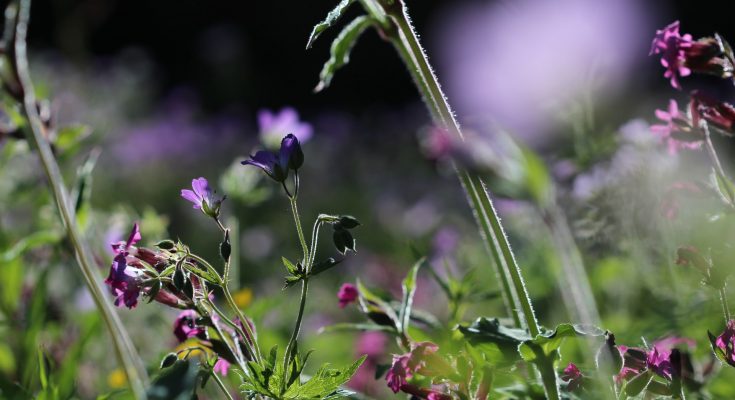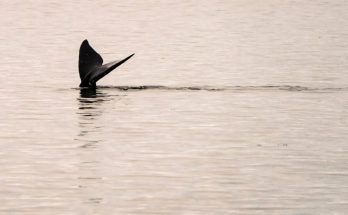The unsustainable use of plants and animals is not just threatening the survival of one million species around the world, but the livelihoods of billions of people who rely on wild species for food, fuel, and income, says a new report by the Intergovernmental Science-Policy Platform on Biodiversity and Ecosystem Services (IPBES).
The IPBES Assessment Report on the Sustainable Use of Wild Species reveals that 1 in 5 people around the world rely on wild species for income and food, while 2.4 billion people depend on wood fuel for cooking.
Experts say, unless we use nature in a more sustainable way, the current biodiversity crisis will be exacerbated, with catastrophic results for humanity. We cannot achieve the Sustainable Development Goals unless transformational changes occur in how we use, value and interact with nature.
“The IPBES report makes it abundantly clear that wild species are an indispensable source of food, shelter and income for hundreds of millions around the world,” says Susan Gardner, Director of the Ecosystems Division at the United Nations Environment Programme (UNEP).
“Sustainable use is when biodiversity and ecosystem functioning are maintained while contributing to human well-being. By continuing to use these resources unsustainably, we are not just risking the loss and damage of these species’ populations; we are affecting our own health and well-being and that of the next generation.”
“With about 50,000 wild species used through different practices, including more than 10,000 wild species harvested directly for human food, rural people in developing countries are most at risk from unsustainable use,” said Dr. Jean-Marc Fromentin, who co-chaired the Assessment. “The lack of complementary alternatives often forces them to further exploit wild species already at risk.”
The report highlights five main practices in using wild species: fishing; gathering; logging; terrestrial animal harvesting (including hunting); and non-extractive practices, such as observing.
“Unfortunately, we’re seeing that every corner of the globe is experiencing severe threats to its wild species,” says Gardner. “By understanding the causes of unsustainable land-use and wildlife-use, we are able to better devise long-term solutions.”
The report also illustrates the importance of indigenous people being able to secure tenure rights over their land, as they have long understood the value of wild species and have learned how to use them sustainably. “It is vital that we empower these communities to look after their own land and the wild species on it,” adds Gardner.
In most future scenarios that enable the sustainable use of wild species, the authors find that transformative changes share common characteristics such as equitable distribution of costs and benefits, changes in social values and effective governance systems.
As UN Secretary-General António Guterres recently noted, there is an urgent need to develop a new paradigm that recognizes the value of nature and understands that life quality is not purely a matter of GDP. Currently, governments around the world spend more than US $500 billion every year in ways that harm biodiversity to support industries like fossil fuels, agriculture and fisheries. Experts say these funds should be repurposed to incentivize regenerative agriculture, sustainable food systems and nature-positive innovations.
With one million species currently under threat, here are five groups of species you may not have known were endangered:
Cacti

The report highlights that several plant groups are threatened due to unsustainable gathering, including cacti, which face issues such as habitat loss and the illegal plant trade. A 2015 International Union for Conservation of Nature (IUCN) report revealed that 31 per cent of the world’s 1,500 cacti species are under threat. The threats cacti face are myriad, from horticulture and private collecting to use as food and medicine, with the roots of some species used as an anti-inflammatory.
Seaweeds

Seaweeds are one of the planet’s great survivors, with relatives of some modern-day seaweeds being traced back 1.6 billion years. Seaweeds play a vital role in marine ecosystems, providing habitats and food for marine lifeforms, while large seaweeds – such as kelp – act as underwater nurseries for fish. Seaweeds also have a wide range of uses, from fertilizing soil to animal and fish feed to biomass for fuel as well as food. Seaweeds also play an important role in combating climate change: 9 per cent of the ocean is forested with seaweeds, which sequesters a huge amount of carbon. Seaweeds are declining due to mechanical dredging, rising sea temperatures and the building of coastal infrastructure.
Giraffes

The report mentions that large-bodied mammals are unsurprisingly the most targeted species for subsistence and commercial hunting, as they provide more meat for consumption and sale. One such mammal under threat is the giraffe. There are approximately 68,000 giraffes left in the wild, comprising four species and eight sub-species, which differ greatly in terms of population. For example, there are only 600 West African giraffes left in the wild, while there are around 45,000 Masai giraffes left. The main causes of giraffe depopulation are habitat degradation and loss due to unsustainable wood harvesting and increased demand for agricultural land. There is also a demand for giraffe meat and ornamentation made from giraffe bones and skin.
Parrots

The report reveals more than 1,000 species of birds, reptiles, fish and mammals are legally and illegally traded for personal and commercial use as pets. Although the total dollar value of species traded as pets is less than 1 per cent of the total trade of wild species, the number of animals traded is in the millions. For example, 16 million live CITES-listed parrots in 321 species were traded internationally between 1975 and 2016. Parrots are also at risk due to habitat loss from agriculture and logging. According to the IUCN Red List, 116 of the world’s 375 parrot species are listed as vulnerable, endangered or worse.
Oak trees

The world’s trees are threatened by various sources, including logging, deforestation for industry and agriculture, firewood for heating and cooking, and climate-related threats such as wildfires. An estimated 31 per cent of the world’s 430 oak species are threatened with extinction, according to the IUCN Red List, while 41 per cent are of conservation concern, mainly due to deforestation for agriculture and fuel for cooking. The highest number of threatened oak species are Mexico (32 species), China (36), Vietnam (20), and the United States (16).
#SpeciesUnderThreat; #IPBES; #Biodiversity; #Ecosystem





